「宇宙」と聞いて、皆さんは何を思い浮かべますか? 多くの人は、輝く星、銀河、それから空っぽで冷たい空間などを思い浮かべると思います。しかし、これは宇宙のほんの一面です。X線やガンマ線で観測される宇宙は、実は超新星爆発やブラックホール誕生、高エネルギー宇宙線などに伴う激動の世界です。我々は、X線・ガンマ線の観測やスーパーコンピュータを使った理論的研究を通じて、宇宙でおこるふしぎな現象の解明を目指しています。
物理科学科
DEPARTMENT OF PHYSICAL SCIENCES
SAGAMIHARA CAMPUS
原子から宇宙まで、最先端研究のその先へ。
世界のサイエンスを推進しよう。
- MENU -
MOVIES 動画で知る物理科学科
FEATURES 学科の特色
-
多様な興味に答えられる幅広い研究領域
宇宙物理、物性物理から生物物理まで物理学の幅広い分野をカバーしており、学生の興味に応じて幅広く学ぶことが可能です。
-
世界を舞台に活躍する教員と充実した研究設備
各研究室には、実験機器や大型計算機などの充実した研究設備が整っています。4年生時の卒業研究では、これらの設備を用いて最先端の研究テーマに取り組みます。
-
豊富な演習、実験を通して物理学の基礎力を着実に養成
自然の法則は、多くの実験を重ねることで確立されてきました。このことを追体験できるよう、実験科目を豊富に設けています。
-
データサイエンティストとしての素養を磨く
AIやビックデータなど、データ科学における最先端の研究に必要なスキルを身につけます。
PICK UP LECTURES 授業紹介
-
物理専門実験I・II
講義で学んだ概念や現象を体験的に理解する授業です。最先端の研究に必要な装置の扱いから解析方法まで幅広く学びます。課題は、高温超伝導・X線回折・マイクロ波・ガンマ線・数値相対論シミュレーション、脈拍計回路などです。課題ごとに少人数のグループに分かれて、専門の教員と共に実験を進めます。
-
量子力学I
現代物理学の基幹をなし、最先端の自然科学を理解する上で必須な概念であり計算手段でもある量子力学の基本的な事項について学習します。特に、(i)量子力学の概念と必要性、(ii) 波動による状態の表し方と「波動性・粒子性」について、(iii)量子力学の計算手法、を理解することを通じて、量子力学の基礎を築くことを目的とします。
-
相対論
ガンマ線バーストや重力波放射天体などの高エネルギー天体現象の理解に必須である特殊相対論について、その基本原理である特殊相対性原理と光速度不変の原理をもとに学習を進めます。時計の遅れ、ローレンツ収縮、相対論的ドップラー・ビーミング効果などの基本的事項とともに、特殊相対性原理の数学的表現である相対論的運動方程式と電磁気学のマクスウェル方程式の共変形式について学びます。
-
生物物理
物理学的な視点・アプローチによって明かにされた生命現象の姿、生命と物質の本質的な違いについて学びます。生体を構成する素子であるタンパク質の構造、機能や、細胞内で特定の機能を発現する細胞内システムについて学習し、生命現象についての理解を深めることを目的とします。
-
コンピュータプログラミング演習
プログラミング言語Cを使って物理科学の研究に頻出する計算を行うためのプログラミング技能の習得を行います。簡単な数値解析やシミュレーションなどができるようになることを目標とします。習得した技能は、専門実験におけるデータの解析や卒業研究の遂行において用いることになります。
-
最新物理講義
物理科学分野の研究を専門とし、それぞれの研究分野の第一線で活躍する複数の教員によるオムニバス形式の講義を展開します。研究室や研究現場の詳細、雰囲気、最先端の研究テーマやそれに対する取り組み方などに触れることができます。大学の集大成となる卒業研究Ⅰ・Ⅱで取り組む研究についての予備的知識を前もって獲得する絶好の機会となります。
LABORATORIES 研究室紹介
固体物理(超電導)(下山 淳一研究室)
「超伝導」、その起源は非常に難解な現象なのですが、表に出てくる性質は比較的単純。電気抵抗がゼロという最も目立った性質は、超伝導リニアや病院で活躍しているMRI装置、最近では送電ケーブルにも使われています。また、不思議な磁気浮上のお遊びができることをご存じの方も多いと思います。残念なのは-200°C程度の極低温まで冷やさなければ使えないこと。もっと使いやすい超伝導体や材料を開発する研究は難しいものですが、とても夢があります。
生物物理学、一分子生物学研究(富重 道雄研究室)
私たちの体の中では、ナノメートルサイズの小さな分子たちが、さまざまな仕事をすることで生命活動を維持しています。その中には新しく作られた物質を運ぶ、分子モーターと呼ばれるタンパク質が存在し、レールに沿って二本足で歩くようにして移動しています。高感度の顕微鏡を用いると、これらの分子が実際に動いている様子を直接観ることができます。生体分子も物理学の法則にしたがって働いており、その仕組みを理解することができれば、生命の謎に迫るだけでなく、ナノマシンの創成につながるかもしれません。
INTERVIEW 学生・卒業生インタビュー
-
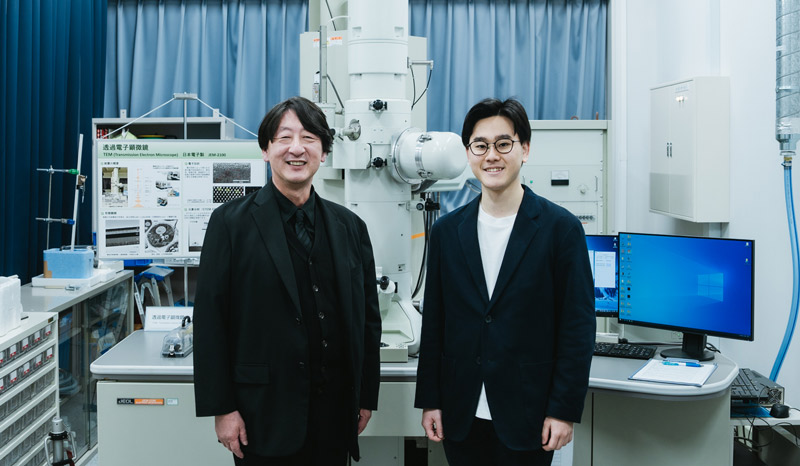 澤 博(名古屋大学 大学院工学研究科 教授) × 大野 礼雄 卒業生 × 在学生
澤 博(名古屋大学 大学院工学研究科 教授) × 大野 礼雄 卒業生 × 在学生150周年記念企画「未来を拓く青学マインド」
「面白い」を突き進み、未知を解き明かす
(2025/3/4 公開)澤 博(名古屋大学 大学院工学研究科 教授) × 大野 礼雄 卒業生 × 在学生 -
 別段 瑞周 在学生
別段 瑞周 在学生<2024年度 学業成績優秀者表彰 最優秀賞受賞>
物理学の勉強に全力投球した大学生活。卒業後も学び続けて専門性の高い人材に
(2024/8/15 公開)別段 瑞周 在学生 -
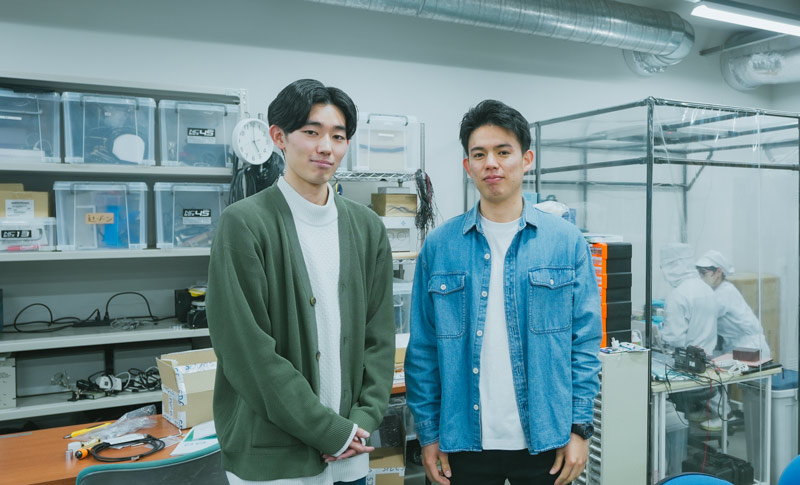 広司 知将 × 高城 栄紘 在学生 × 在学生
広司 知将 × 高城 栄紘 在学生 × 在学生チームワークを発揮し予想外の成功を収めたハッカソン。その経験を衛星開発に生かす
(2024/6/7 公開)広司 知将 × 高城 栄紘 在学生 × 在学生 -
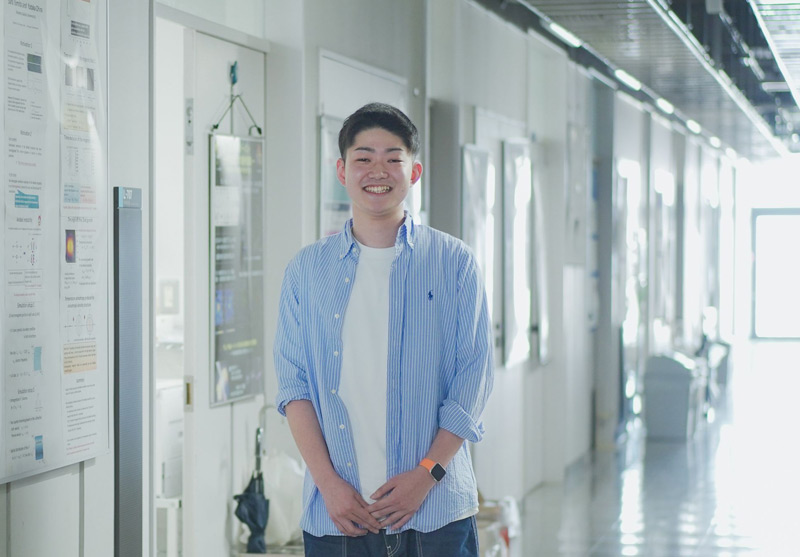 及川 凜 在学生
及川 凜 在学生<2023年度 学業成績優秀者表彰 最優秀賞受賞>
ブラックホールや超新星など人知を超えた世界だからこそ宇宙物理学は楽しい
(2023/7/31公開)及川 凜 在学生 -
 正木 篤志 在学生
正木 篤志 在学生海外ボランティアで得られた2つの成長が専門分野の学びも変えた
(2023/5/8 公開)正木 篤志 在学生 -
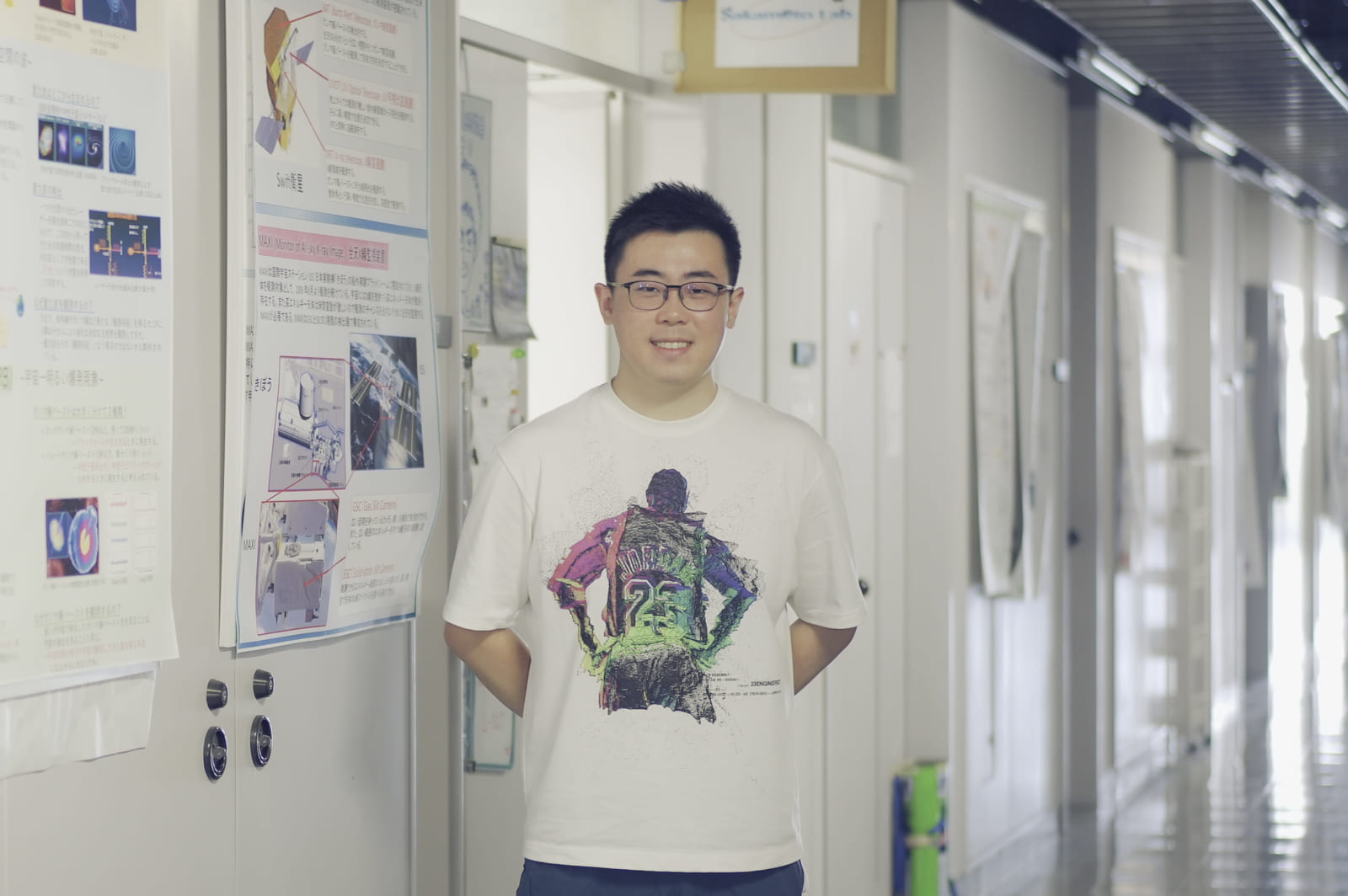 盛 顯捷(セイ ケンショウ) 在学生
盛 顯捷(セイ ケンショウ) 在学生留学で見つけた天文学者になるという夢の続き
(2022/7/27 公開)盛 顯捷(セイ ケンショウ) 在学生 -
 山本 あい 在学生
山本 あい 在学生自分で実験装置を一から作り、答えのないテーマと向き合う日々が貴重な成長の機会に
(2022/6/28公開)山本 あい 在学生 -
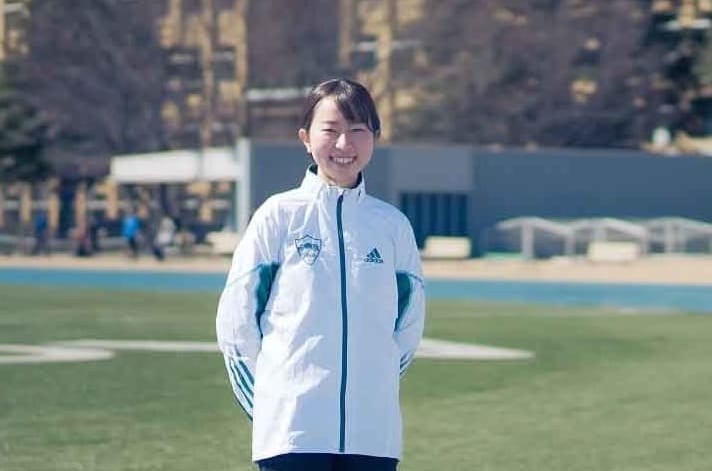 小柳 唯菜 在学生
小柳 唯菜 在学生<2021年度学業成績優秀者表彰 奨励賞>
効率的に時間を活用して陸上競技部マネージャーと宇宙研究を両立
(2022/3/31 公開)小柳 唯菜 在学生 -
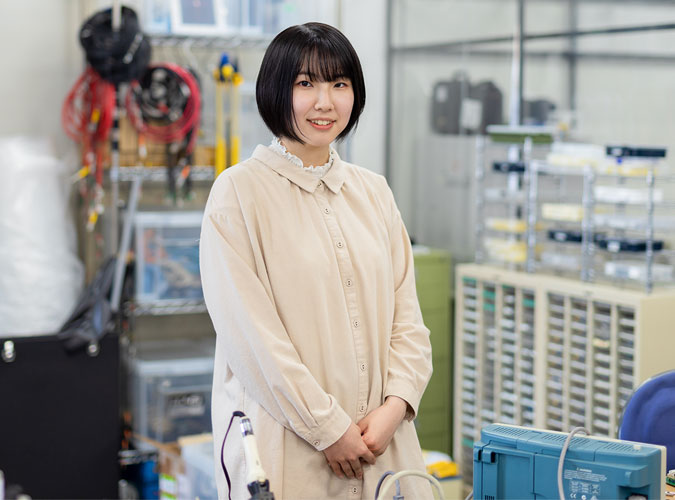 伊澤 梓実(いざわ あずみ) 宇宙への関心から物理への学びへ
伊澤 梓実(いざわ あずみ) 宇宙への関心から物理への学びへ宇宙の謎をきっかけに物理学の奥深さを発見
(2021/7/21公開)伊澤 梓実(いざわ あずみ) 宇宙への関心から物理への学びへ -
 前田 はるか教授 × 鈴木 貴大 物質の最小単位である原子を研究
前田 はるか教授 × 鈴木 貴大 物質の最小単位である原子を研究原子物理(量子制御、リュードベリ原子)
(2020/9/16公開)前田 はるか教授 × 鈴木 貴大 物質の最小単位である原子を研究 -
 伊藤 彩加 在学生
伊藤 彩加 在学生宇宙へのロマンを抱き続け、追究したことで夢をつかめた
(2020/11/26 公開)伊藤 彩加 在学生
FROM FACULTY MEMBERS 教員・研究室インタビュー
-
 北野 晴久教授 × 三原 莉央 AGU LiFE 研究室インタビュー
北野 晴久教授 × 三原 莉央 AGU LiFE 研究室インタビュー得意の微細加工技術を駆使し、超伝導の本質を探究する
(2025/1/16 公開)北野 晴久教授 × 三原 莉央 AGU LiFE 研究室インタビュー -
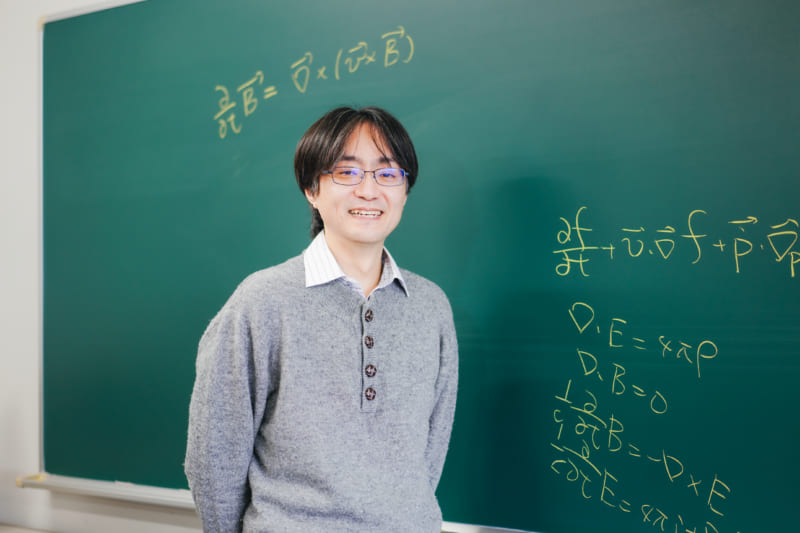 山崎 了教授 AGU RESEARCH
山崎 了教授 AGU RESEARCH実験室で宇宙プラズマ衝撃波の生成に成功。その成果を米科学誌に論文発表
(2023/06/22 公開)山崎 了教授 AGU RESEARCH -
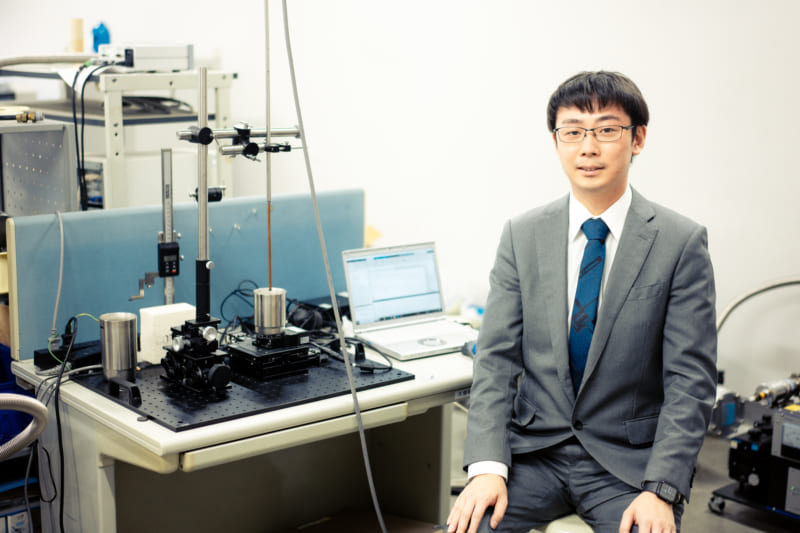 元木 貴則助教 AGU RESEARCH
元木 貴則助教 AGU RESEARCH高温超伝導磁石の開発手法を追究〜NMRの小型汎用化の実現を目指す〜
(2023/06/19 公開)元木 貴則助教 AGU RESEARCH -
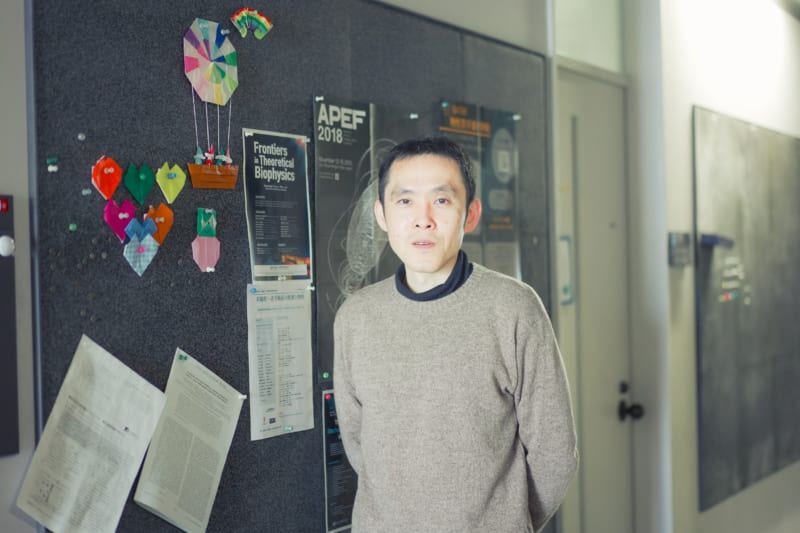 坂上 貴洋教授 AGU RESEARCH
坂上 貴洋教授 AGU RESEARCH細胞内の染色体の動きを表す数式を発見〜生命の神秘を物理学的観点から解き明かす〜
(2023/06/16 公開)坂上 貴洋教授 AGU RESEARCH -
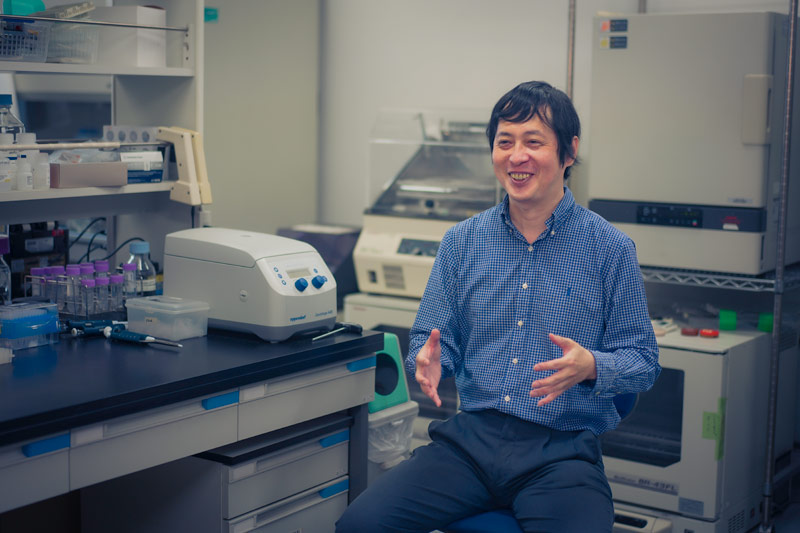 富重 道雄教授 AGU RESEARCH
富重 道雄教授 AGU RESEARCH分子レベルで生物の仕組みを解き明かすことが、新たな物理法則の発見につながる
(2022年 公開)富重 道雄教授 AGU RESEARCH -
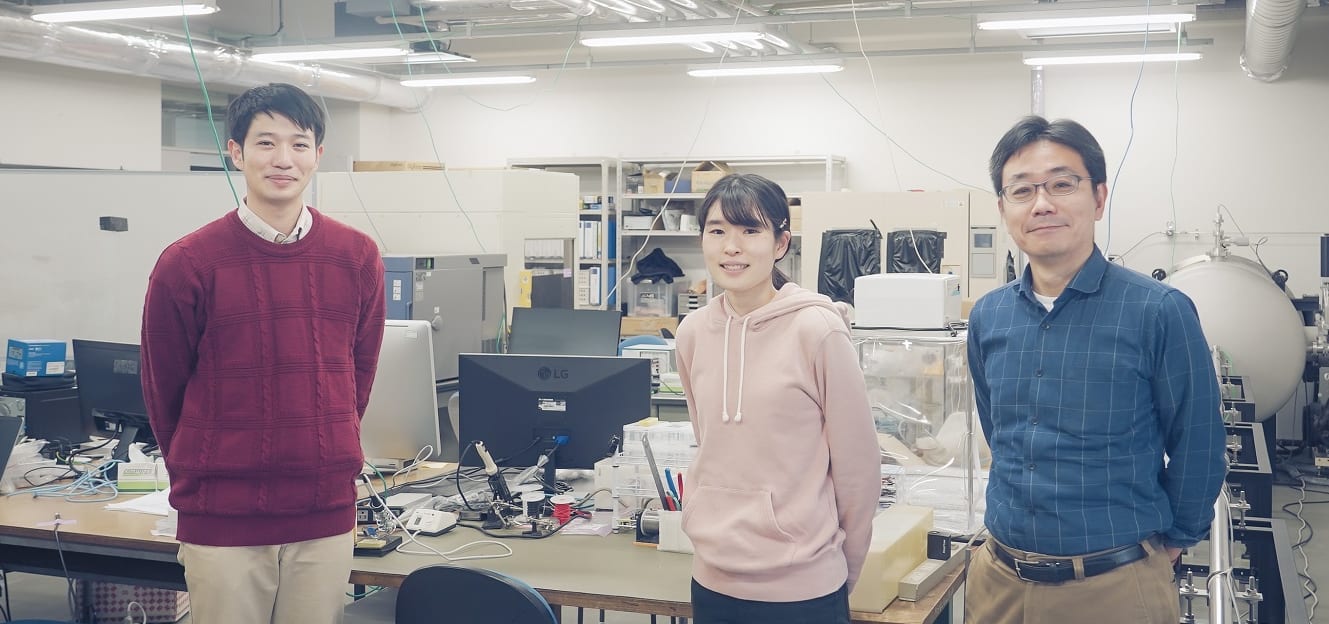 坂本 貴紀教授 × 授畑 泰代 × 鴨志田 一真 AGU LiFE 研究室インタビュー
坂本 貴紀教授 × 授畑 泰代 × 鴨志田 一真 AGU LiFE 研究室インタビュー速報実証衛星 ARICA の開発およびその打ち上げを振り返る
(2021/12/7公開)坂本 貴紀教授 × 授畑 泰代 × 鴨志田 一真 AGU LiFE 研究室インタビュー -
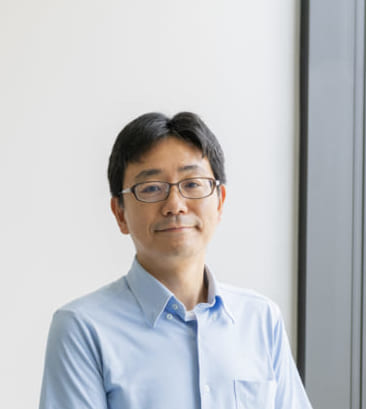 坂本 貴紀教授 AGU RESEARCH
坂本 貴紀教授 AGU RESEARCH突発的な天体現象からダイナミックな宇宙を知る
(2020年 公開)坂本 貴紀教授 AGU RESEARCH -
 前田 はるか教授 × 鈴木 貴大 AGU LiFE 研究室インタビュー
前田 はるか教授 × 鈴木 貴大 AGU LiFE 研究室インタビュー原子物理(量子制御、リュードベリ原子)
(2020/9/16 公開)前田 はるか教授 × 鈴木 貴大 AGU LiFE 研究室インタビュー